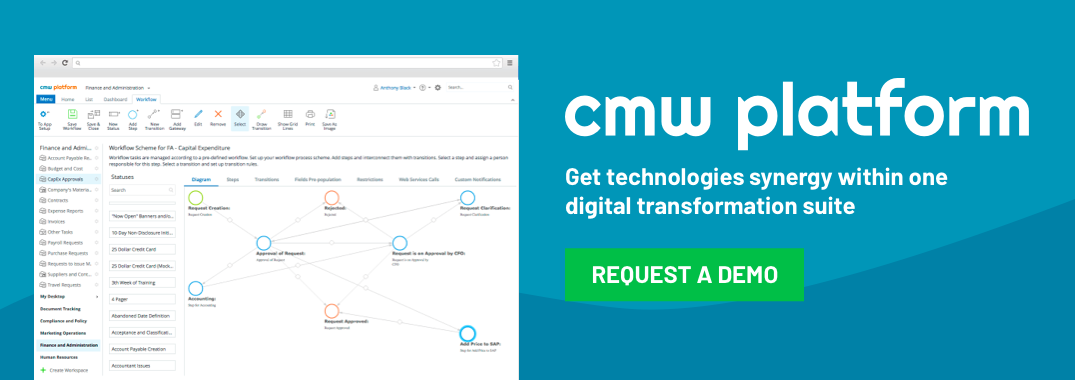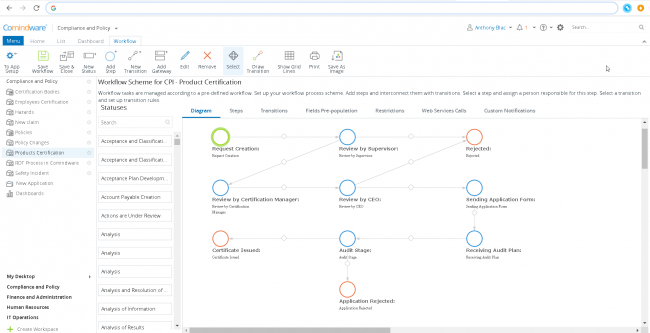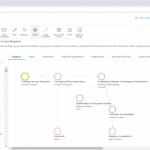Business Rules Engine and Workflow Engine – Difference
Friday, August 14, 2020
When looking into automation and the use of software to manage basic business tasks, it is easy to get bogged down in complicated language. Some people use different terms, well, differently. Business rules engines and workflow engines are two of the most important aspects to automating business functions and while some use the terms as if they mean the same thing, they do not and the difference is important.
What is a business rules engine?
A business rules engine refers to conditions that are created within the software that determines when and what applications to start, stop, and the like. This is where the rules for how the automation software is to respond to given inputs or conditions. With this, even those who don’t have any coding experience can interact with and even change aspects of the conditions in the process as needed.
With this tool, you can change, alter, or customize different aspects of business requirements without needing to change any code or have any technical know-how. This makes it far more accessible to more parties within an organization that can help to streamline and better the software in use.
It is important to understand that business rules engines do not, themselves, perform tasks. Rather, it is a set of conditions and guidelines that help determine a course of action in a given instance.
Business rules engines are useful in that they promote consistency and can be combined into what is called rulesets.
Comindware Tracker utilizes functionality based on the classic rules system. These systems use a logical approach whereby a large set of conditions will determine that resulting action. It gives a clear understanding of what action is necessary based on the rules and conditions that are built into it. This creates something akin to a “working memory” for the system to determine when a new action or process needs to be initiated or implemented.

What is a workflow engine?
Business processes, in the parlance of automation software, are often referred to as workflows. A workflow engine is a tool that allows tasks to be initiated and automated. This is done via the workflow design, in which users map all steps and conditions within a given process. The software can then execute tasks based on this workflow design.
Workflow simply refers to the steps that must be taken for a process to be completed. This is most often done with data entry or other repetitive tasks that not only take up a lot of valuable time but also leave room for human error.
In the “old days” this was all done manually, by hand, and often required the input of multiple people along the way. It is easy to see how inefficient and unnecessarily time-consuming this is.
With a workflow engine, workflow design tool and data management feature you can easily create a set of processes, get them running, and manage them, as well. This saves a ton of time and often leads to a dramatic reduction in error and delay. With workflow software like our offerings at Comindware, even those who don’t have a ton of technical experience can still use the software and reap the myriad benefits.

Key differences between business rules engines and workflow engines
Both of these tools create an environment where even those without a ton of tech experience can manage and change automated business processes as needed. Both of these engines allow changes to be made without the need to alter the underlying code, meaning that most employees can manage the software, even if they have no experience with coding.
They are very different in terms of what they do and what their function is. For example, a business rules engine is designed to help with decision-making processes, especially those with a lot of complex variables. Workflow engines run specific processes based on the workflow design.
Business rules engines are a part of what is called an enterprise application, whereas workflow engines are an actual tool that is part of workflow tools and technologies. Workflow technologies automate many aspects of workflow, but business rules engines can be separated from applications and used in other instances.
A business rules engine is, as the name implies, driven by basic rules. Workflow software is based on a workflow design of the specific process to be automated. Workflow engines help perform business functions, while conversely, a business rules engine simply helps to develop business knowledge.
Though some may use the words interchangeably, it is clear to see that business rules engines and workflow engines are two very different things. Business rules engines allow for the definition of various business processes that will help with complex decision-making and add to the overall knowledge base of the business. Workflow software, like Comindware Tracker, is used to automate various tasks based on a process workflow design. Both tools are versatile and flexible and those without a knowledge of coding can manage, change, and integrate these solutions.



Posted on: in Process World